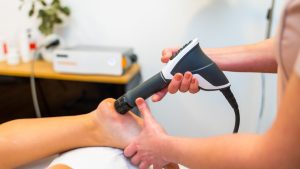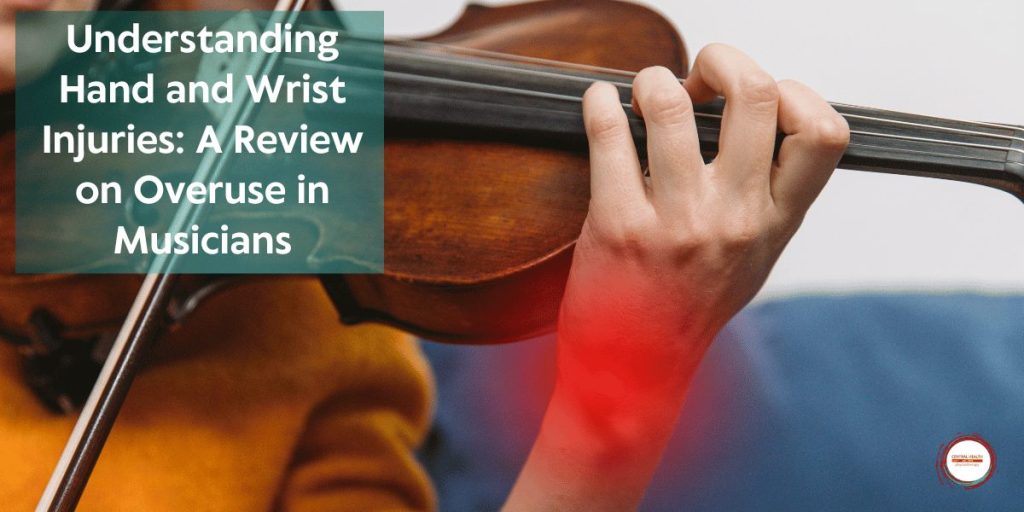
Hand and wrist overuse injuries are a significant concern, especially among musicians and performing artists. These injuries can lead to chronic pain, numbness, and even the inability to play an instrument. This article offers a comprehensive look at the most common hand injuries caused by prolonged use, particularly in the context of musicians. We’ll explore the different types of hand and wrist injuries, their causes, symptoms, and treatment options, all backed by a systematic review of existing literature. Whether you’re a musician, a healthcare professional, or simply interested in the topic, this article is worth reading to better understand the risks and preventive measures associated with hand overuse injuries.
Article Outline
- What Are Hand and Wrist Overuse Injuries?
- How Common Are Hand Injuries Among Musicians?
- What Is Tenosynovitis and How Does It Affect Musicians?
- Understanding Carpal Tunnel Syndrome in Musicians
- What Is Tendonitis and How Is It Treated?
- Exploring Stenosing Tenosynovitis: Trigger Finger in Musicians
- Cubital Tunnel Syndrome: Causes and Symptoms
- How Arthritis Affects the Hand and Wrist in Musicians
- Risk Factors for Developing Hand and Wrist Overuse Injuries
- Treatment Options and Prevention Strategies for Musicians
1. What Are Hand and Wrist Overuse Injuries?
Hand and wrist overuse injuries refer to musculoskeletal conditions caused by repetitive movements, excessive strain, and improper technique. These injuries often affect the tendons, muscles, and nerves of the wrist and hand, causing pain, stiffness, and in severe cases, persistent pain and an inability to continue playing. This can lead to common hand injuries in musicians who spend long hours practicing and performing.
The upper extremities, especially the wrist and hand, are highly susceptible to overuse injuries due to the intense nature of playing an instrument. For instance, many musicians suffer from conditions like tenosynovitis and tendonitis, which result from the continuous stress placed on the tendons in the hands. Such injuries can cause significant pain and swelling, making it difficult, if not impossible, to play their instruments.
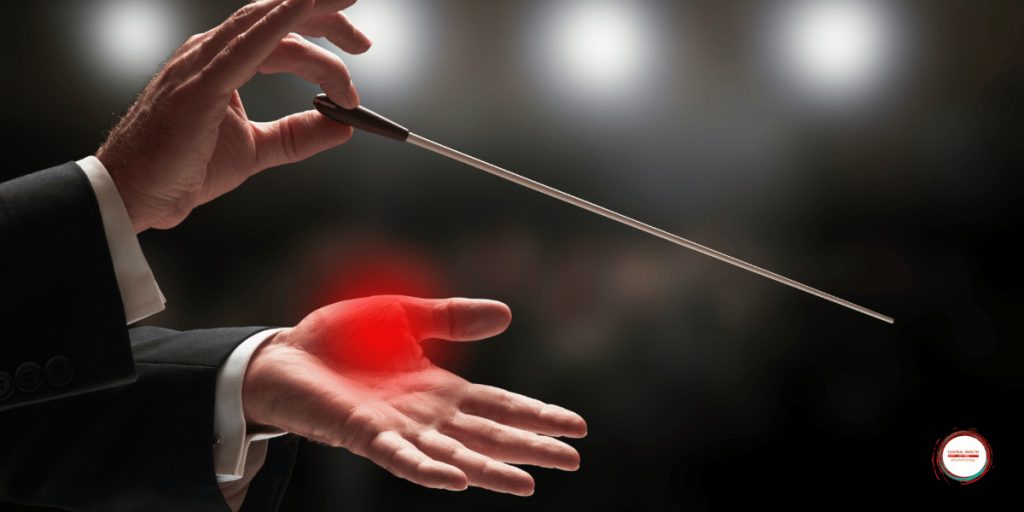
2. How Common Are Hand Injuries Among Musicians?
Hand injuries are alarmingly common among musicians, with many experiencing some form of pain or discomfort at some point in their careers. A systematic review of epidemiology studies (1) shows that up to 93% of musicians will develop playing related musculoskeletal complaints over their lifetime use. They showed the incidence of upper extremity musculoskeletal problems was 56% (Shoulders 26%, Wrists 12%, Hands 10% and Elbows 8%).
Interestingly the highest rates of injury were seen in younger (22-29 years old – 83%) and older (50-61 years old – 91%) populations of musicians.
Musicians are at risk of developing arm and hand injuries because their profession requires precision, dexterity, and prolonged periods of practice. For example, violinists, pianists, and guitarists are often affected by tendonitis, carpal tunnel syndrome, and other overuse injuries. These conditions can be exacerbated by psychological stress, which can increase muscle tension and contribute to the development of these injuries.
3. What Is Tenosynovitis and How Does It Affect Musicians?
Tenosynovitis is an inflammation of the sheath that surrounds a tendon, often caused by arm and hand overuse. Among musicians, this condition is particularly prevalent due to the repetitive movements required when playing an instrument. The inflamed sheath can cause significant pain, swelling, and even a clicking sound when the affected tendon is moved.
Tenosynovitis can severely impact a musician’s ability to perform, as the pain and stiffness make it challenging to maintain the necessary dexterity. The condition is often treated with anti-inflammatory medications, rest, and sometimes physiotherapy. In more severe cases, surgery may be required to relieve the inflamed sheath and restore normal function. Our hand specialist team will be able to advise you if you need to see an orthopaedeic surgeon.
4. Understanding Carpal Tunnel Syndrome in Musicians
Carpal tunnel syndrome is one of the most common hand injuries among musicians, caused by compression of the median nerve as it passes through the carpal tunnel in the wrist. This condition leads to numbness, tingling in the fingers, and hand pain, which can severely affect a musician’s ability to play.
Carpal tunnel syndrome is often diagnosed through physical examination and imaging tests like an MRI. Treatment options include wearing a wrist splint, taking anti-inflammatory medications, and in severe cases, hand surgery to relieve the pressure on the median nerve. For musicians, it is crucial to diagnose this condition early to prevent long-term damage and ensure they can continue playing.
5. What Is Tendonitis and How Is It Treated?
Tendonitis is the inflammation of a tendon, commonly caused by repetitive use or overuse of the arm, wrist and hand. Musicians are particularly prone to developing tendonitis due to the repetitive motions required in playing an instrument. Symptoms include pain, stiffness, and swelling in the affected area.
Treatment for tendonitis usually involves rest, anti-inflammatory medications, and specialist hand therapy to strengthen the surrounding muscles and reduce inflammation. In some cases, hand surgery may be necessary if the tendon is severely damaged. Early intervention is key to preventing chronic tendonitis and ensuring musicians can continue their careers without interruption.
6. Exploring Stenosing Tenosynovitis: Trigger Finger in Musicians
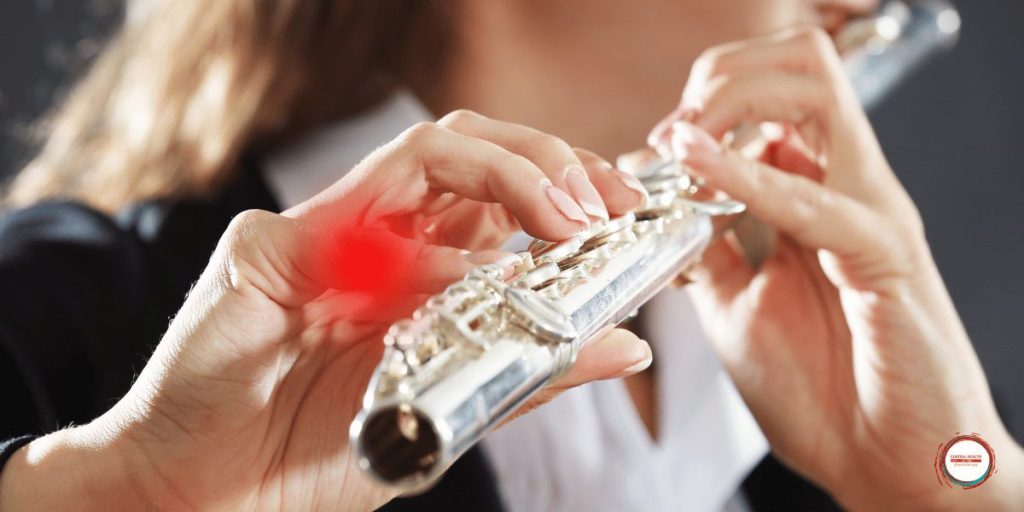
Stenosing tenosynovitis, also known as trigger finger, occurs when inflammation narrows the space between the cover of a tendon in a finger, causing it to get stuck in a bent position. This condition is quite common among musicians who engage in repetitive movements, such as string instrument players.
Trigger finger can make it difficult to straighten the affected finger, often producing a clicking sound when it is straightened. The condition is typically treated with anti-inflammatory medications, splinting, and in some cases, surgery to release the inflamed tendon sheath. For musicians, early treatment is essential to prevent the condition from worsening and affecting their ability to perform.
7. Cubital Tunnel Syndrome: Causes and Symptoms
Cubital tunnel syndrome is caused by compression of the ulnar nerve as it passes through the cubital tunnel on the inside of the elbow. This condition can cause numbness and pins and needles in the fingers, as well as pain and weakness in the forearm. Musicians who play instruments that require prolonged elbow flexion, such as violinists and guitarists, are at higher risk of developing this condition.
The symptoms can be managed with rest, anti-inflammatory medications, and specialist hand therapy. In more severe cases, surgery may be necessary to relieve the pressure on the ulnar nerve. It is important for musicians to recognise the early signs of this condition and seek treatment promptly to avoid permanent nerve damage.
8. How Arthritis Affects the Hand and Wrist in Musicians
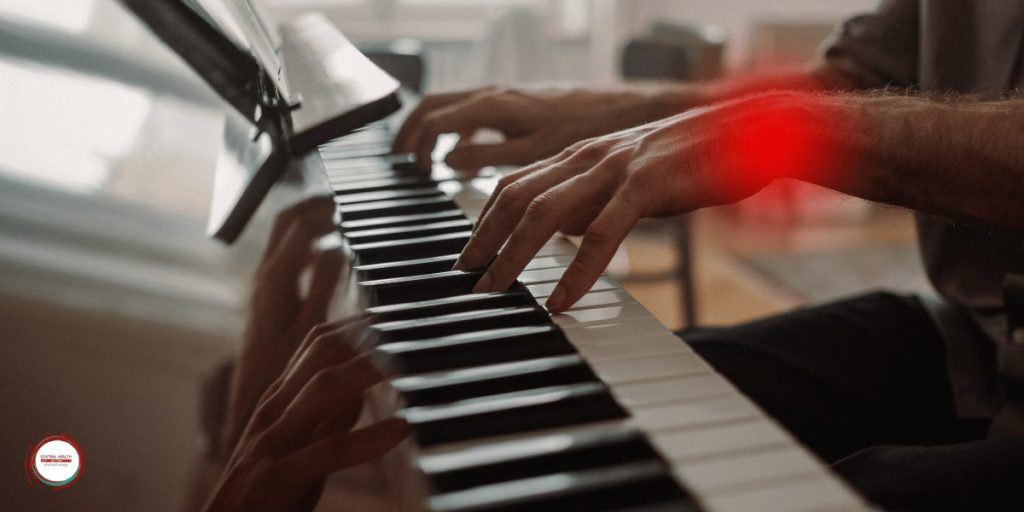
Arthritis is a degenerative joint disease that can affect the hand and wrist, leading to pain, stiffness, and loss of function. Musicians are at risk of developing arthritis due to the repetitive stress placed on their joints over time. There are several types of arthritis, including osteoarthritis and rheumatoid arthritis, that can impact musicians.
Arthritis in the affected hand can make it difficult for musicians to grip their instruments and perform precise movements. Treatment typically includes anti-inflammatory medications, physical therapy, and in some cases, hand surgery to repair or replace damaged joints. Early intervention and appropriate management are crucial to maintaining hand function and prolonging a musician’s career.
9. Risk Factors for Developing Hand and Wrist Overuse Injuries
Several risk factors contribute to developing hand and wrist overuse injuries among musicians. These include improper technique, joint laxity, and prolonged practice sessions without adequate rest. Psychological stress can also play a role in exacerbating these injuries by increasing muscle tension and making musicians more susceptible to strain.
Musicians can reduce their risk of developing these types of injuries by using the correct technique, taking regular breaks during practice, and managing stress levels. Consulting with specialist hand therapists or other healthcare professionals can also help musicians develop individualised rehabilitation programs to prevent and treat these types of injuries for musicians.
The types of instruments played also have an impact. Musicians who play strings (like violin or guitar) are up to twice as likely as woodwind or brass players to get problems.
10. Treatment Options and Prevention Strategies for Musicians
Treatment for hand and wrist overuse injuries varies depending on the specific condition and its severity. Common treatment options include rest, anti-inflammatory medications, physical therapy, and in some cases, surgery. Musicians must seek treatment early to prevent the injury from becoming chronic and affecting their ability to perform. Therapy is mostly based on individual rehabilitation programmes rather than on long-term rest. Our specialist team of hand therapists will work with you to build a rehab programme that allows you to continue to play while you recover.
Prevention strategies include coaching improved technique, incorporating regular breaks, and exercises to strengthen the hand and wrist muscles. Musicians should also be mindful of the signs of these types of injuries and seek professional help if they experience pain, numbness, or reduced range of movement in their hands. By taking proactive measures, musicians can protect their hands and continue to enjoy their craft for years to come.
Key Takeaways
- Hand and wrist overuse injuries are common among musicians, often caused by repetitive movements and improper technique.
- Tenosynovitis and tendonitis are frequent conditions that result from the prolonged use of hand and wrist muscles.
- Carpal tunnel syndrome and cubital tunnel syndrome are nerve-related conditions caused by compression, leading to numbness and tingling in the fingers.
- Stenosing tenosynovitis (trigger finger) can significantly impact a musician’s ability to perform if not treated early.
- Arthritis in the hand and wrist is a degenerative condition that can affect musicians, particularly as they age.
- Risk factors for overuse injuries include prolonged use, improper technique, joint laxity, and psychological stress.
- Treatment options range from rest and anti-inflammatory medications to physiotherapy and hand surgery.
- Prevention involves coaching improved technique, incorporating regular breaks, and performing prescibed exercises to strengthen the hand and wrist muscles.
By understanding the risks and taking preventive measures, musicians can protect their hands from overuse injuries and continue to enjoy their passion for playing music. Make sure you’re optimising your recovery by seeing an expert like one of our Advanced Hand Therapists.




